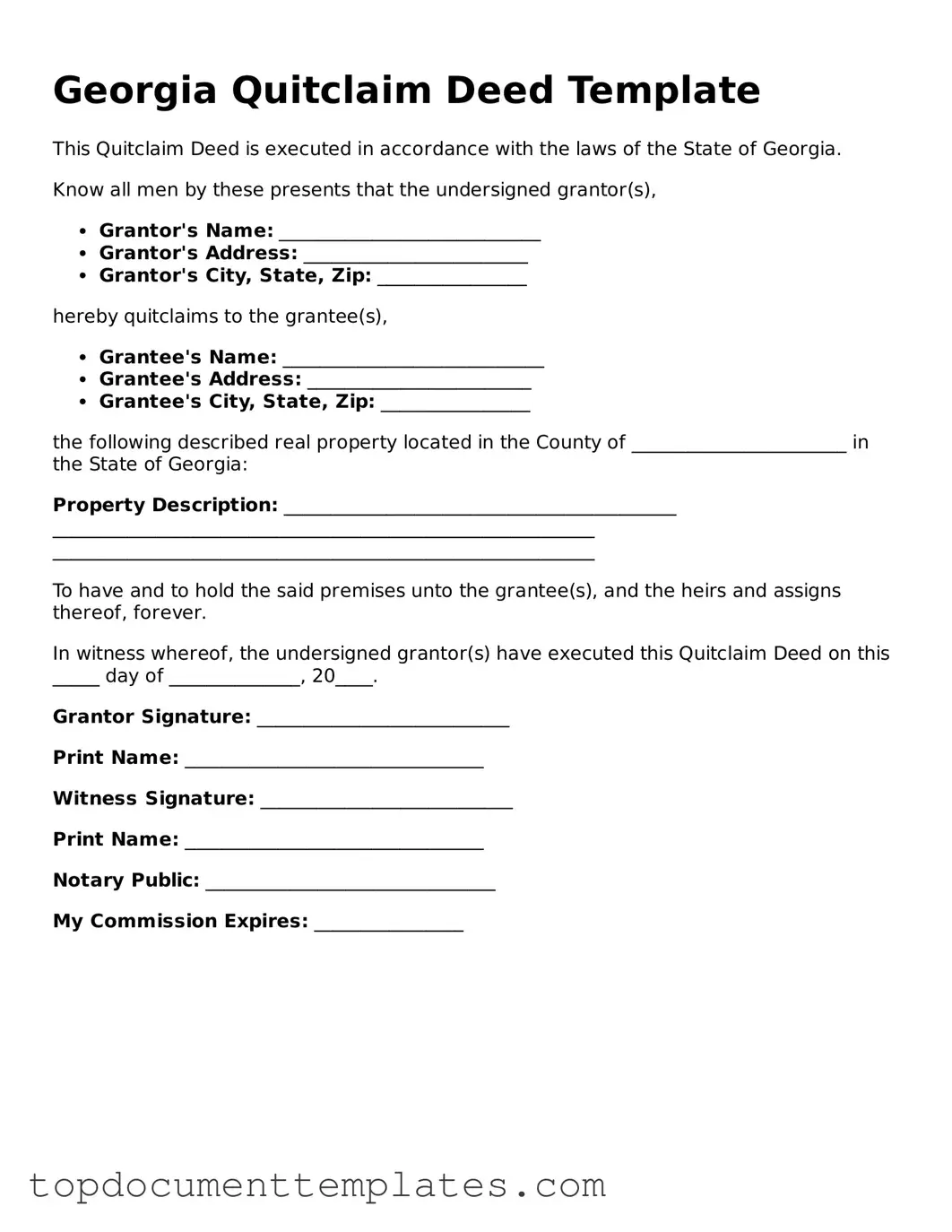The Georgia Quitclaim Deed form serves as a crucial legal instrument for property transfers, allowing individuals to convey their interest in real estate without making any guarantees about the title. This type of deed is particularly useful in situations where the parties involved have a pre-existing relationship, such as family members or business partners, and where the transfer is made without monetary exchange. Unlike warranty deeds, which provide assurances regarding the property’s title, a quitclaim deed transfers whatever interest the grantor may have, if any, with no warranties or covenants attached. The form must be executed in accordance with Georgia state laws, which typically require the signatures of both the grantor and the grantee, along with notarization. Additionally, it is important to note that the quitclaim deed should be recorded in the county where the property is located to provide public notice of the change in ownership. This recording process helps to protect the interests of all parties involved and ensures clarity in property rights. Understanding the nuances of the Georgia Quitclaim Deed form can facilitate smoother transactions and help prevent potential disputes over property ownership in the future.
